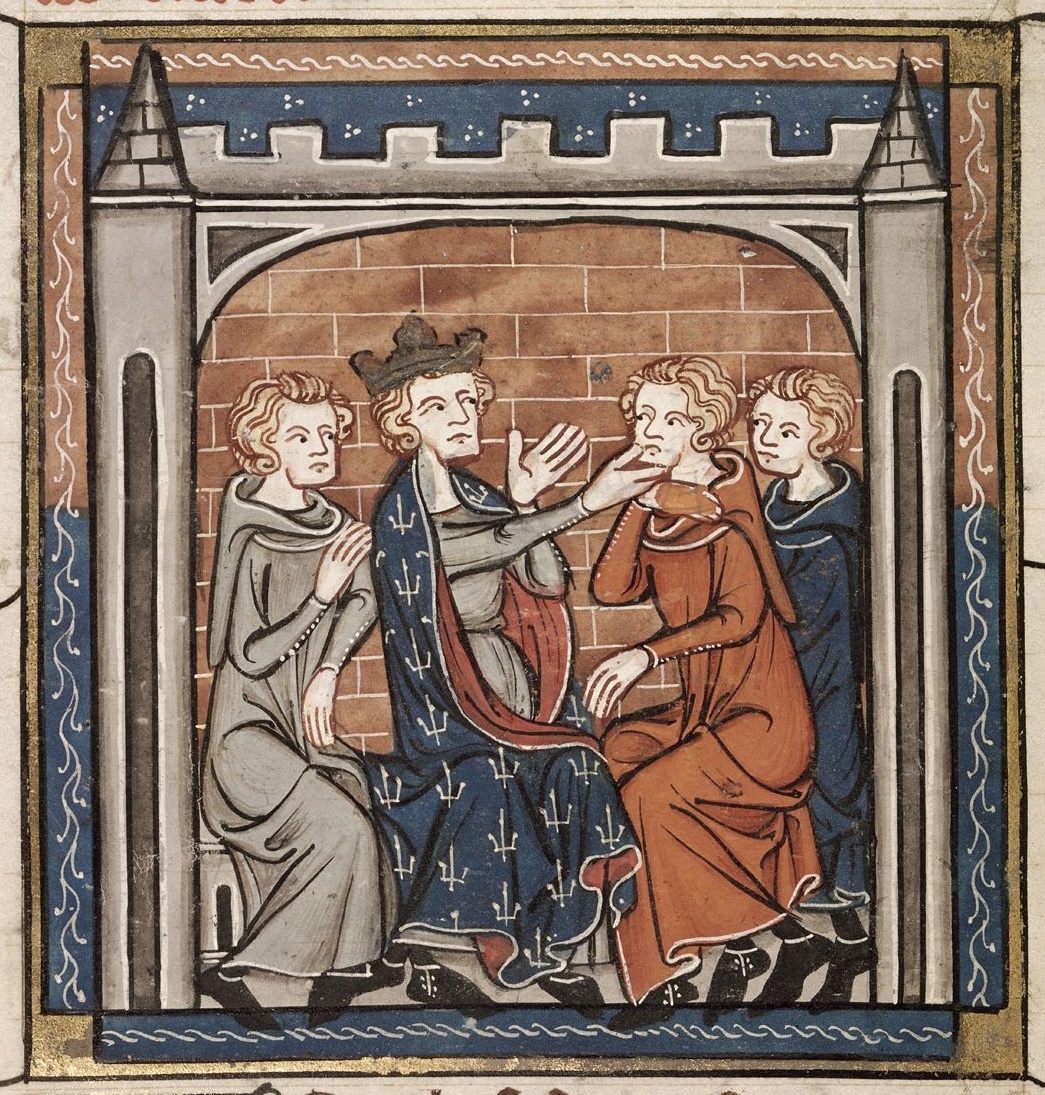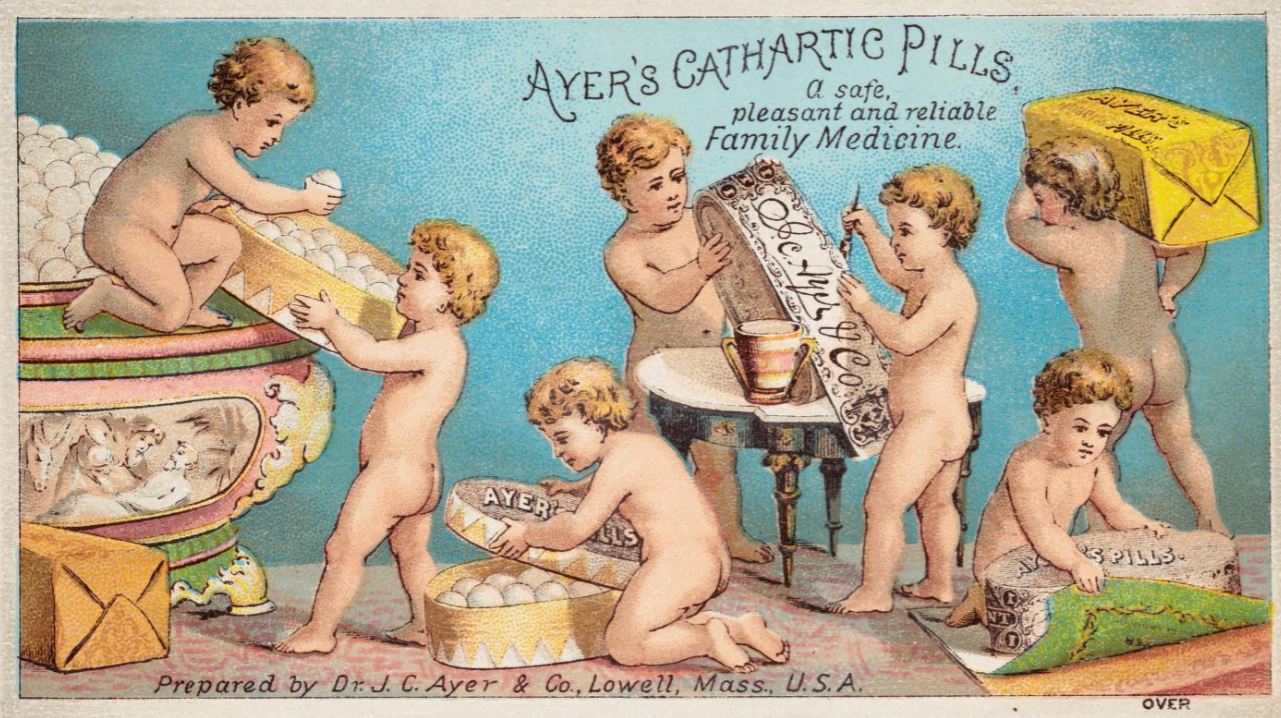In the early 19th century, Nathanial McClure, a frontiersman in Garrard County Kentucky, had a problem. Open sores or abscesses were growing on his neck. Local physicians didn’t have the answer for his problem, diagnosed as the King’s Evil or scrofula. He learned about the cures of Richard Carter, a frontier herb doctor. According to McClure, the herb doctor’s cures worked! McClure’s testimonial and various cures for scrofula were published in Carter’s book of cures, Valuable Vegetable Medical Prescriptions, for the Cure of all Nervous and Putrid Disorders.
January the 16th, 1815. — I, Nathaniel McClure, was taken with the King’s Evil, about four years past; it grew very fast, about a year and a half before I applied to a doctor. I was under his care five months, he gave me ease; then it grew about a year, and was very bad. Then I applied to another doctor, he done me no good, still grew worse. Then I applied to doctor Richard Carter, and since it feels as well as ever; and I believe it is a sound cure. It has been about three months since he quit treating me — Given under my hand. NATHANIEL M’CLURE. Test. (witnessed by), John Wray, James Finnel.
Select the images for a larger view and more information.
What is scrofula?

Today we know scrofula is an infection of the lymph nodes in the neck. Most cases are caused by a type of tuberculosis bacteria. It is treated and cured with antibiotics. However, no one knew the cause of scrofula until 1882 when Robert Koch discovered the tuberculosis bacteria. Even after this discovery, some denied the truth of his discovery. The antibiotic cure for tuberculosis was not developed until the 1940s.
For thousands of years, the causes and cures for scrofula were unknown and unscientific. Greek and Latin forms of the word scrofula described inflamed tumors. Ancient Greek physicians noted it was especially common in children. The term was often used for any type of skin disease, abscesses, or sores.
In 1870, the British Medical Journal asked
What is Scrofula? There are few questions more difficult to answer satisfactorily than “What is scrofula?” And yet everyone feels to have knowledge as to what the answer should be. . . It is a disease which produces enlargements of the glands, white swellings of the joints, obstinate ulcerations of the skin, caries (decay) of bones, and so forth. . . . (March 19, 1870, pp. 290-291)
From the 13th century to the 18th century, scrofula was known as the King’s Evil. Monarchs of England and France were believed to have the supernatural power to cure the disease with “the royal touch.”
Clovis of France (ruled 481-511) and Edward the Confessor (r. 1042-66) of England were believed to be the first kings with the gift to cure the disease. By the reigns of French King Louis IX (r. 1226-70) and English King Edward III (r. 1327-77), a ceremony had developed. Edward III used a medallion called a touch-piece, which was given to the sick person as a type of holy relic. Originally the ceremony consisted of the king washing the diseased flesh with water, but England’s Henry VII (r. 1457 – 1509) discontinued this practice. Instead, the king touched his scrofulous subject while a priest recited prayers and presented the medallion.
These ceremonies continued for centuries. According to surviving records, Edward I (r. 1272-1307) touched 533 of his subjects in just one month; Philip VI of Valois (r. 1328-50) touched 1500 people at a single ceremony; Charles II (r. 1660-82) touched over 92,000 people during his 22-year reign. Writer Samuel Johnson was one of the last recorded people to be cured by a monarch of the King’s Evil. As a child, he was touched by Queen Anne (r. 1702-14) and wore his touch-piece into adulthood along with the scars on his neck.
Did a monarch’s touch really cure scrofula? People believed in miracles; they believed the healing power of the king’s touch was given by God to anointed kings. In the modern world, scientists note that sufferers who received the king’s touch may have had minor skin aliments that resolved on their own. Even for those with the chronic disease of scrofula, abscesses and swollen glands often disappear on their own, sometimes reappearing much later. If the sores disappeared days, weeks or even years later, the king’s touch was credited with the cure.
In Shakespeare’s play Macbeth (early 1600s), the royal touch to cure scrofula is described:
Malcolm: Well; more anon.–Comes the king forth, I pray you?
Doctor: Ay, sir; there are a crew of wretched souls
That stay his cure: their malady convinces
The great assay of art; but at his touch–
Such sanctity hath heaven given his hand–
They presently amend.
Malcolm: I thank you, doctor. [Exit Doctor]
Macduff: What’s the disease he means?
Malcolm: ‘Tis call’d the evil:
A most miraculous work in this good king;
Which often, since my here-remain in England,
I have seen him do. How he solicits heaven,
Himself best knows: but strangely-visited people,
All swoln and ulcerous, pitiful to the eye,
The mere despair of surgery, he cures,
Hanging a golden stamp about their necks,
Put on with holy prayers: and ’tis spoken,
To the succeeding royalty he leaves
The healing benediction. With this strange virtue,
He hath a heavenly gift of prophecy,
And sundry blessings hang about his throne,
That speak him full of grace. (Act IV Scene III)
Historical cures for scrofula
If one did not have access to a monarch’s miraculous touch, healers and physicians provided a wide range of treatments for scrofula. Some recommended mercury. Since ancient times, mercury, referred to as cinnabar, quicksilver or calomel, was administered as an ointment or pill or inhaled as a vapor to treat skin diseases such as scrofula. It was also used to treat typhoid, yellow fever, parasites, constipation, syphilis, mental illness, and other complaints. Mercury taken internally induced vomiting and sweating, reactions believed to cleanse the body. The additional side effects of mercury include rashes, headaches, muscle weakness, breathing difficulty, and changes in vision. But in the past, these problems were often assumed to be a part of the disease being treating or caused by another illness. Even though mercury was viewed as a legitimate medical treatment, today we know that mercury is poisonous.
In 1830, The New-York Medical and Physical Journal recommended mercury as the best cure.
Mercury. This is one of the oldest and most efficacious articles in the treatment of scrofula. As to its modus operandi, it is believed to excite an irritation which neutralizes that of scrofula, and thus destroys it. It augments the absorption and secretion of the glands, and thus resolves scrofulous tumors. Mercury may be given with the advantage in nearly all forms of scrofula, particularly in cutaneous eruptions, engorgements, lymphatic infiltrations, chronic phlegmasia, ophthalmia, and nervous affections, dependent on the scrofulous taint. p. 328
Alternative treatments were recommended in medical books and publications by physicians, healers like Richard Carter mentioned above, and patent medicine sellers. Keep in mind that all medications before the 20th century were “over the counter” and unregulated. The claims made by patent medicine sellers may or may not have been true. Labels were not required to include accurate lists of ingredients. Ingredients might be useless, harmless, dangerous, or even deadly. Many believed the cures they sold really worked. Others were quacks who promoted a fake cure for financial gain.

O’Neill’s Catholican was a liquid remedy for a wide variety of ailments. The following appeared in the 1841 introduction of a 16-page booklet of testimonials advertising the product. Catholicon is a word for a cure-all or panacea.
He, (P. O’Neill) however, avails himself of this occasion, to aver that not one grain or particle of mercury is used in the composition, nor any other mineral, of any description whatever. It is purely and thoroughly the unadulterated extract of the vegetable kingdom.
The following advice was published in Scientific American twice and many other publications in the mid-1800s. Scientific American began publication in 1845 and was considered a reliable source for general readers about new developments in science and technology. Nicholas Longworth (1783-1863) was a banker, winemaker, and philanthropist. It’s not clear if he really promoted this cure, how he discovered it; or if it was mistakenly attributed to him.
In 1855: A Cure for Scrofula
Nicholas Longworth, the famous millionaire and wine-grower of Cincinnati, publishes the following cure for scrofula: Put two oz. of aquafortis (nitric acid) on a plate on which you have two copper cents. Let it remain from eighteen to twenty-four hours. Then add four ounces of clear, strong vinegar. Put cents and all in a large-mouthed bottle, and keep it corked. Begin by putting four drops in a teaspoonful of rainwater, and apply it to the sore. Make the application three times a day, with a soft hair pencil, or one made of soft rags. If very painful put more water. As the sore heals apply it weaker.
S. Capt. Harkness, of our city, the first person cured by this remedy, applied it without water, and he informed me that he thought it would burn his leg off; but the next day it was cured. His was a small sore, and had been attended. to for months by one of the best physicians, without any benefit. – from Baltimore Sun (newspaper)
NOTE from Scientific American editors: This may be a very good remedy for this evil. Any piece of copper will answer as well as two cents. The product is simply the nitro-acetate of copper.
In 1858: A Cure for Scrofula.
The Cincinnati Commercial (newspaper) publishes the following communication from Nicholas Longworth, the great wine manufacturer of that city:
“All the papers I had, giving the cure for scrofula, have been distributed to persons sending for the remedy. I have never heard of a case where it did not affect a speedy cure, and it can in no case do an injury. In several instances where it has been applied to old sores, it has also speedily affected perfect cures. Put one ounce of aquafortis in a bowl or saucer; drop in it two copper cents-it will effervesce-leave the cents in; when the effervescence ceases, add two ounces of strong vinegar. The fluid will be a dark green color. It should and will smart. If too severe, put in a little rainwater. Apply it to the sore, morning and evening, by a soft brush or rag. Before applying it, wash the sore with water.
Its first application known to me was a poor girl, sent to our city from Memphis, to have her leg cut off, as it was feared she might not live long enough to have it cut off in that hot climate. She was refused admittance to the poorhouse, and was lying on the sidewalk, as she could not even stand up. From her knee to her foot one third of the flesh was gone, and all the skin, except a strip about two inches wide. She was laid on a bed, and the remedy placed on a chair by it. She could rise up and apply it. In a few days her peace of mind returned, and she declared her leg was getting well. It was supposed it was a relief from the pain only; but when examined, fresh flesh was found growing, and skin over it. She was soon running about, and would work, which delayed the entire cure, leaving a small sore, which was, in a few months, entirely healed. A young girl with scrofula in her neck, leaving a large open hole, and deemed incurable, come one month after entirely cured, and recently married, with her husband, on their way to the east. I have never known a case where it did not effect a cure.”
Almanacs were publications providing useful information and entertainment. Patent medication companies often provided them free or at low cost with a majority of the content promoting their products. This almanac promoted Dr. Wengert’s products, including a cure for scrofula.
Fouse Brothers & Co.’s Almanac, 1874
Scrofula is a foul corruption, which dwells and genders in the Blood, and rots out the very essence of life, acting like a latent poison upon the system. It is characterized by Swellings, Enlarged Joints, Abscesses, Pustular Eruptions, Thickening of the Upper Lip, Sore Eyes and Tumors. Scrofula when allowed to remain in the system any length of time, becomes constitutional and is hereditary, descending from parents to children unto the third and fourth generation. This being an established fact, why is it that thousands upon thousands are allowing their offspring to become victims of this loathsome disease, when Dr. Wengert’s Indian Vegetable Restorative and Blood Purifier is within the reach of all and millions bearing testimony of its efficacy in subduing this lurking destroyer of mankind?
Parents think of your responsibility and do not allow your dear little ones to suffer from your negligence.
Directions: — Take the Indian Vegetable Restorative and Blood Purifier regularly. Commence in moderate closes and gradually increase them as it is found to agree with the stomach. This should be continued until some impression is made upon the system when the dose may be diminished a little as the disease is disappearing.
Were the physicians and healers promoting mercury and other useless cures for scrofula quacks? Maybe, and maybe not. In the pre-scientific era, the actual cause and cure of most diseases were not known. So it’s hard to judge if those promoting or selling useless cures in the past were knowingly duping their customers.
In the 21st century, we have a scientific process providing reliable treatments for medical problems. However, even now, research takes time and the answers are not always immediately clear. While scientists work on treatments and cures, modern quacks manipulate feelings of uncertainty, confusion, and fear of pain, disease, and death to sell their cures. They promote their impossible cures for the most common health problems and most frightening diseases for their own gain, not the well-being of their customers.
To learn more:
- To learn more about the history of medicine, disease, and quackery see:
- More books by this author
References:
“The King’s Evil and the Royal Touch: The Medical History of Scrofula,” by J. Murray, H. Rieder, and A Finley-Croswhite, The International Journal of Tuberculosis and Lung Disease, June 2016.
“History and Importance of Scrofula,” by S. Grzybowski and E. Allen, Lancet, 1995.
About the header image: Royal touch of French King Louis IX for the King’s Evil or scrofula. This image appeared in a 14th-century French manuscript. Image courtesy of the British Library Catalogue of Illuminated Manuscripts.







I could use this lesson to teach illnesses and diseases in the early 19th century in upper elementary, middle, or high school. The journal quotes can be used to introduce a number of concepts. First, to introduce primary and secondary sources along with citations. They also can be used to introduce different points of view and the importance of reading first-hand accounts from the time period. Finally, I can use the surviving records to introduce not only the lesson on diseases in the early nineteenth century, but also how to read a record and determine reliability.
The blog is very informative. I love history!!
What an interesting post! I could use this to teach the history of medicine and diseases for middle school students and older. I would use the comparison of how mercury was used then as opposed to how we view it now to teach the evolution of medicine to cure diseases.